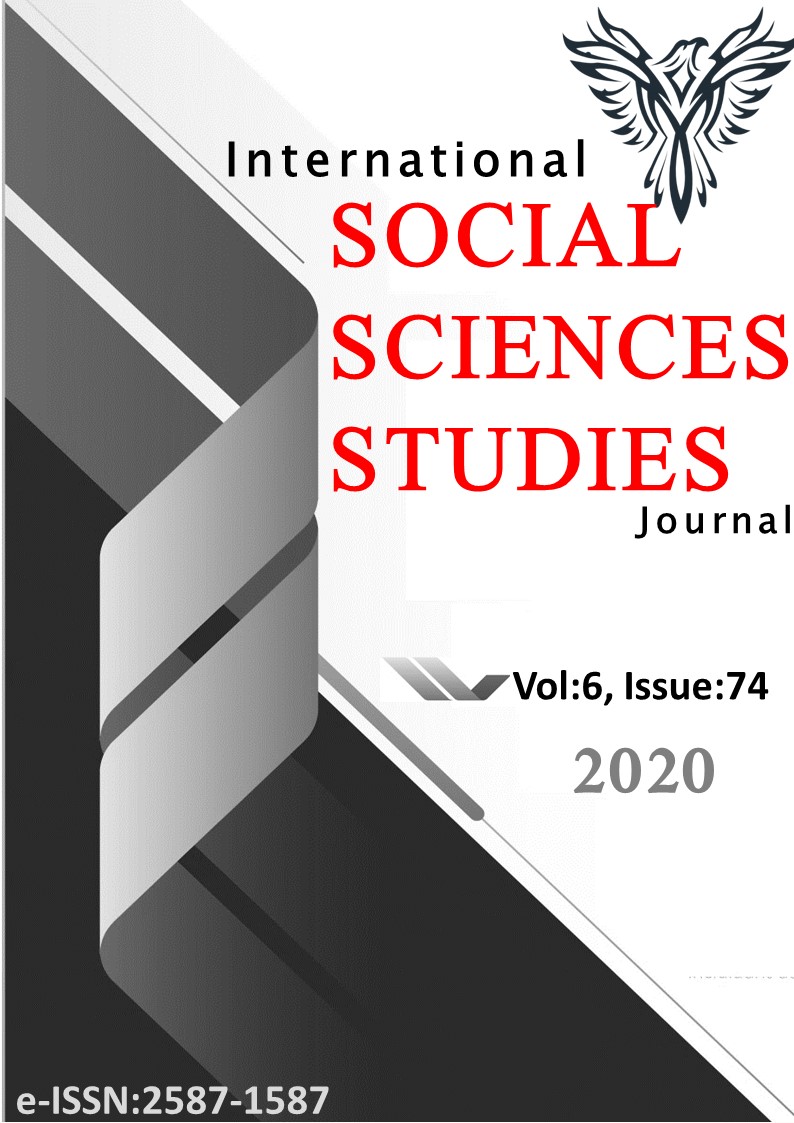Author :
Abstract
Yaşam ve ölüm ilişkisi yüzyıllar boyunca insanlar tarafından tartışılıp anlaşılmaya çalışılırken, insanın ölümlü olduğu gerçeği toplumların kültür ve inanış biçimlerini şekillendirmiştir. Sanat var olduğu günden bu yana ölüm kavramı, toplumların sanat anlayışını etkilemiş ve sanat eserlerinin içeriğini belirleyerek sanatçılar, ölüm temasını işleyen çalışmalar yapmışlardır. Bu çalışma ile 1960’lı yıllardan günümüze kadar olan süreçte sanatçıların kullanmış oldukları ölüm imgelerinin sanat eserlerine hangi şekillerde yansıdığı ve günümüz güncel sanatına etkilerinin neler olduğunun ortaya konulması hedeflenmiştir. Bu amaçla araştırmada; nitel araştırma yöntemlerinden, “Betimsel Tarama ve Doküman Analizi” yapılmıştır. Resim, heykel, fotoğraf, yerleştirme, video ve performans gibi tekniklerle ölüm temasının işlendiği örnekler seçilerek incelenmiştir. Bu araştırma ile ölümün insanların yaşamında huzursuz bir etki bıraktığı incelenen çalışmalardan anlaşılmaktadır. İnsanlar ölüme sürekli mesafeli davranırken sanatçılar, ölüm imgesini yaratıcılıklarının bir ürünü olarak seçmişler ve eserlerinde ölümü ifade eden imgeleri, yaşamla ölüm diyalektiği ile hiç çekinmeden kışkırtıcı bir şekilde kullanmışlardır. Sanatçıların çalışmalarında, ölüm imgesini kullanırken; resim, heykel gibi geleneksel yöntemlerin yanı sıra fotoğraf, yerleştirme, video ve performans gibi güncel sanatın tekniklerini ve ifade biçimlerini kullandıkları görülmüştür. Bununla birlikte sanatın kurmaca özelliğinden de yola çıkarak bazı sanatçıların kendi ölümlerini kurgulayarak performanslar gerçekleştirdiği ve bunu internet ortamında yayınlayarak izleyicileri de çalışmanın bir parçası haline getirerek ilişkisel bir estetik ile çalışmalarını ortaya koydukları görülmüştür. Ayrıca, açılan “Ölüm Müzesi”nde sergilenen ölü bedenlerin ise estetik ve anti-estetik bir bakış açısı ile etik problemleri ortaya çıkardığı söylenebilir.
Keywords
Abstract
While the relationship between life and death has been discussed and understood by people for centuries, the fact that human beings are mortal has shaped the culture and belief styles of societies. Since the day art existed, the concept of death has influenced the understanding of art in societies and artists have made studies on the theme of death by determining the content of artworks. With this study, it is aimed to reveal the ways in which the death images used by the artists in the period from the 1960s until today are reflected in the artworks and what are the effects on today's contemporary art. For this purpose, in the research; Among qualitative research methods, “Descriptive Scanning and Document Analysis” was made. The examples in which the theme of death was handled with techniques such as painting, sculpture, photography, installation, video and performance were selected and examined. With this research, it is understood from the studies examined that death has an uneasy effect on people's lives. While people were always distant to death, the artists chose the image of death as a product of their creativity, and they used the images that represent death in their works, with the dialectic of life and death, in a provocative way. While using the image of death in the works of the artists; In addition to traditional methods such as painting and sculpture, it has been observed that they use contemporary art techniques and expressions such as photography, installation, video and performance. On the other hand, based on the fictional nature of art, it has been observed that some artists have performed performances by fictionalizing their own deaths, and by publishing this on the internet, making the audience a part of the work, they have revealed their works with a relational aesthetic. In addition, it can be said that the dead bodies exhibited in the "Death Museum" opened up, revealing ethical problems with an aesthetic and anti-aesthetic perspective.





